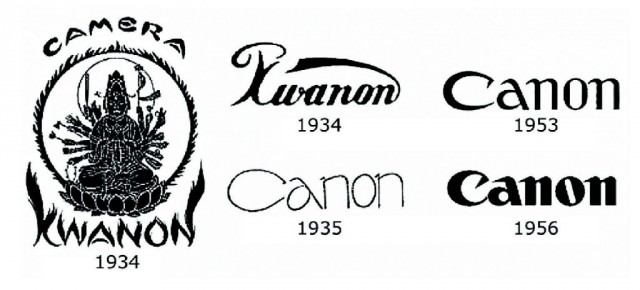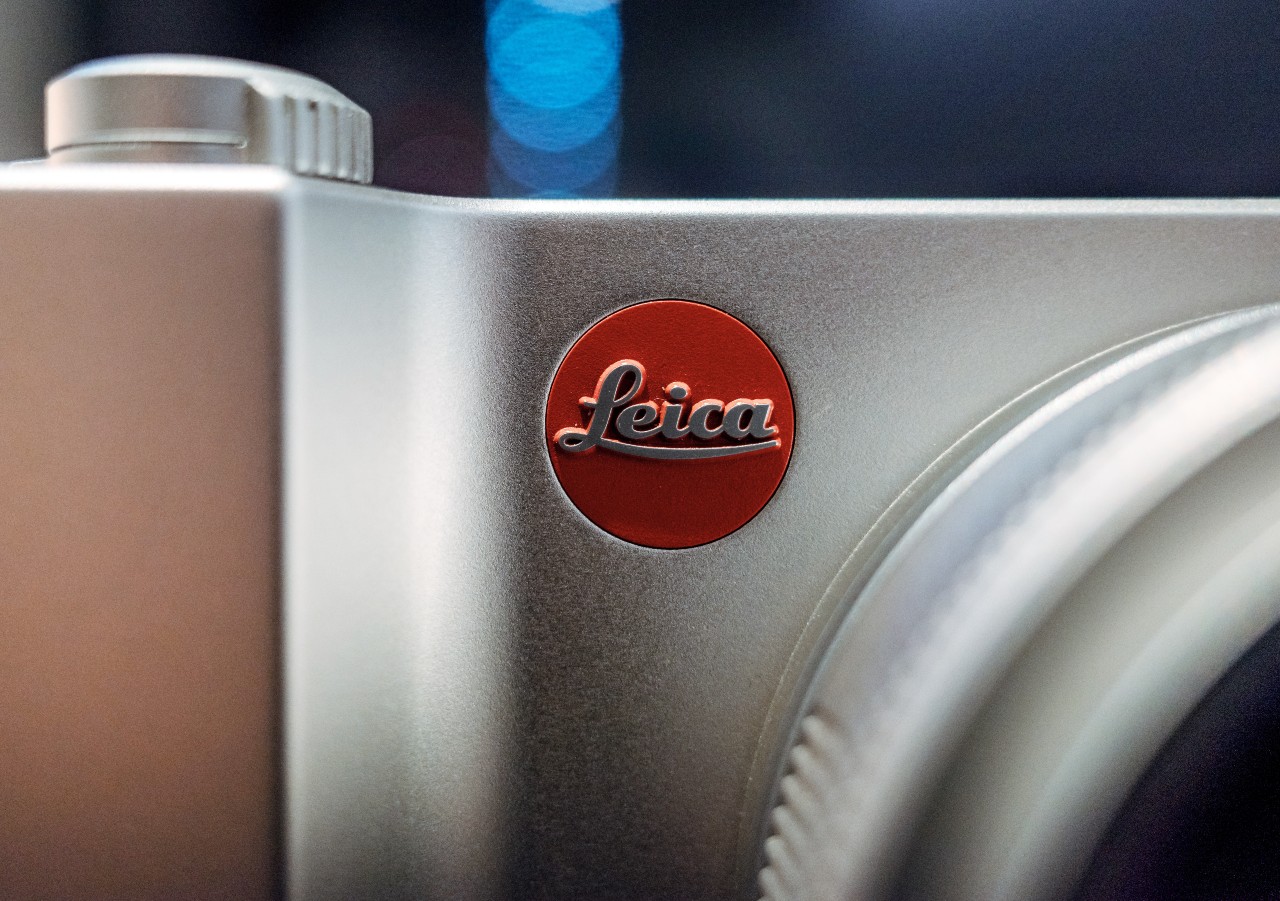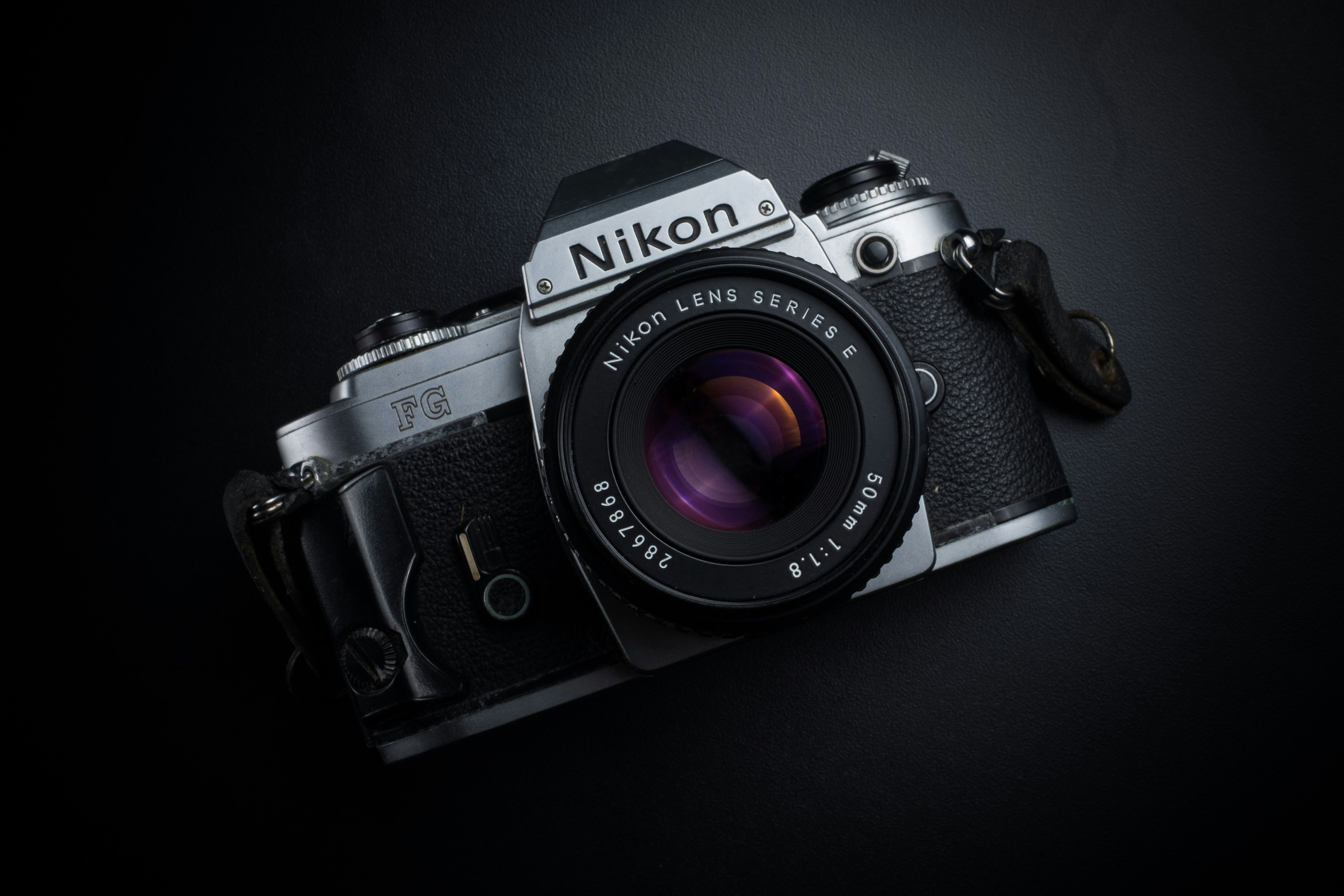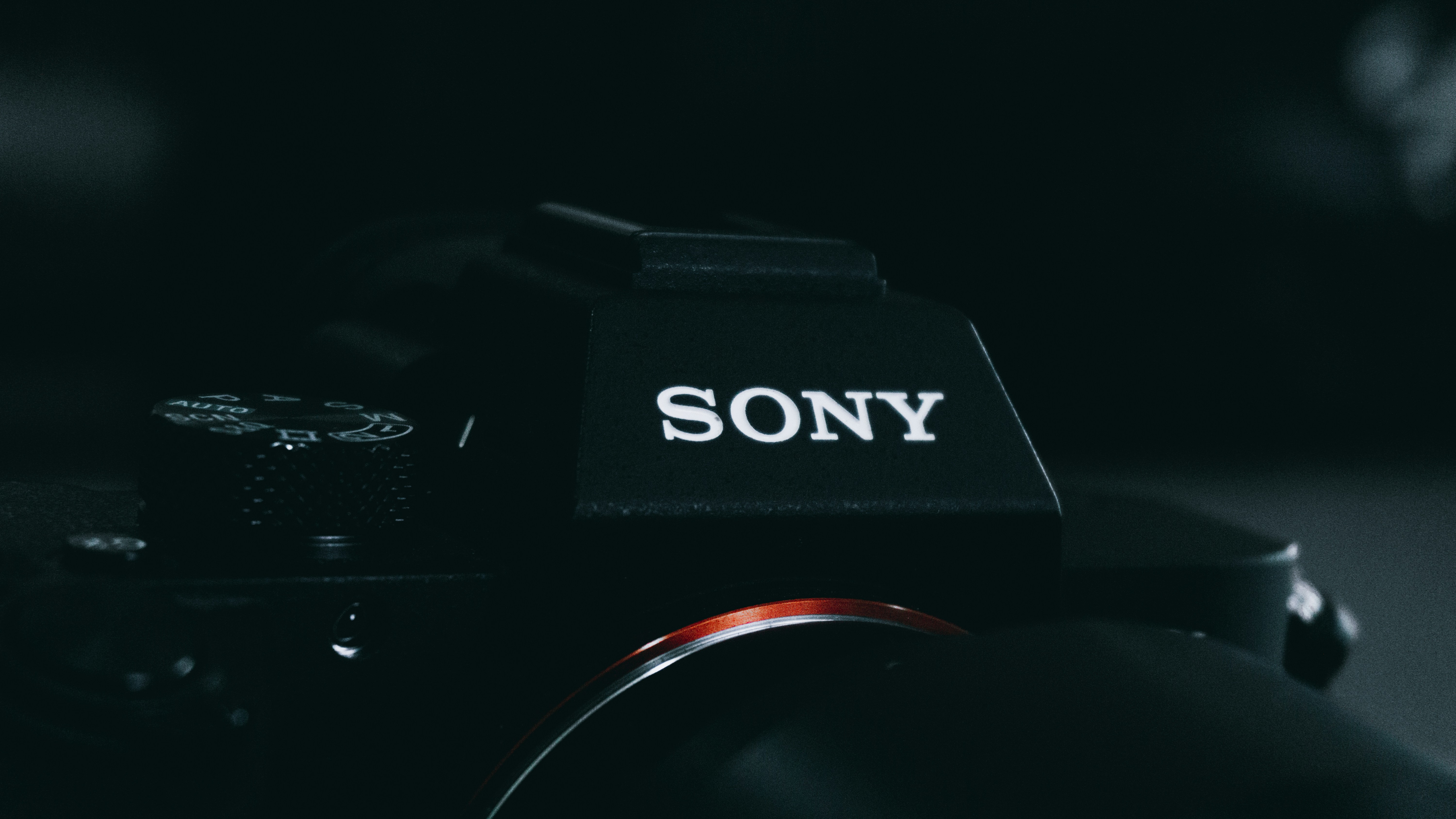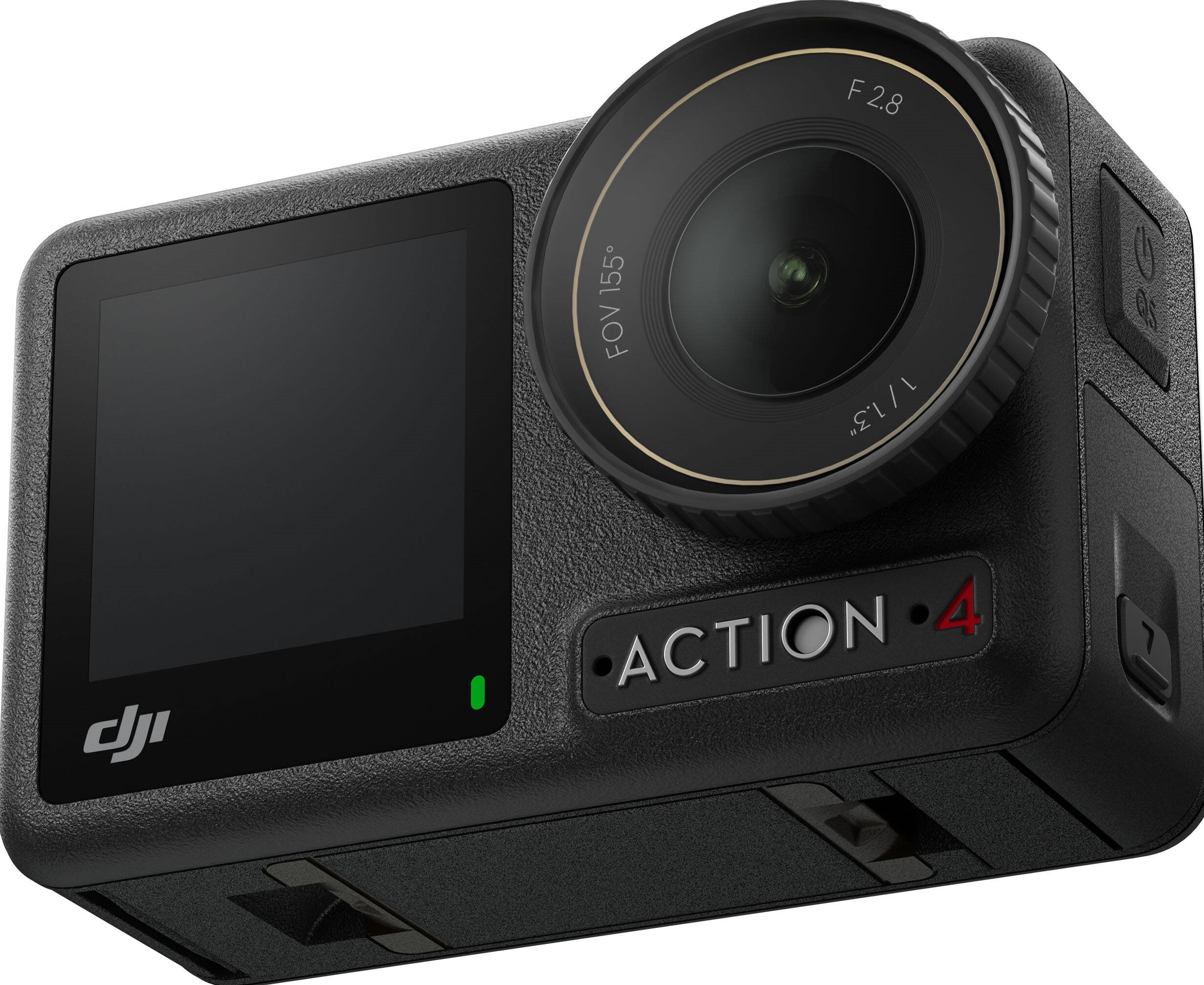Canon is a name synonymous with photographic excellence. Since 1933 the brand has played a pivotal role in shaping the photographic and imaging industry. The brand’s journey began in a small laboratory in Tokyo, under the name Precision Optical Instruments Laboratory. Since then it has grown into a global market leader, with a legacy marked by continuous innovation, groundbreaking technologies, and a commitment to quality.
We explore Canon’s illustrious history from its inception to the present day.
Early Beginnings and Innovations (1933-1949)
From 1933 to 1939, Canon laid its foundational stones. The Precision Optical Instruments Laboratory was created with a mission to research and develop high-quality cameras. In 1934, the company developed the Kwanon, Japan’s first 35mm focal-plane-shutter camera. The camera featured a focal-plane shutter mechanism for faster shutter speeds and precise exposure control. Inspired by the Leica II, the Kwanon was designed to compete with Western cameras. It was named after the Buddhist Goddess of Mercy, symbolising the company’s aspirations for compassion in business.
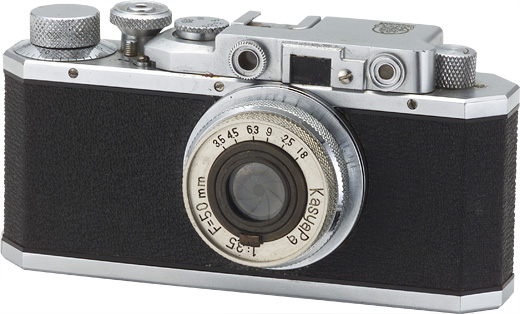
Although never mass-produced, the Kwanon served as a crucial developmental step for Canon, leading to the introduction of the Hansa Canon in 1936, their first commercial 35mm focal-plane-shutter camera. The Hansa Canon featured Nikkor lenses and its body and user-friendly design were also inspired by the Leica II. The camera’s focal-plane shutter allowed for faster and more accurate shutter speeds, enhancing exposure control. The Hansa Canon represented Japan’s serious entry into the high-quality camera market, establishing Canon’s reputation for reliable photographic equipment. It laid the technological and commercial foundation for Canon’s future developments, contributing to the company’s growth and success. This camera demonstrated that Japanese manufacturers could produce high-quality cameras capable of competing with established European brands.
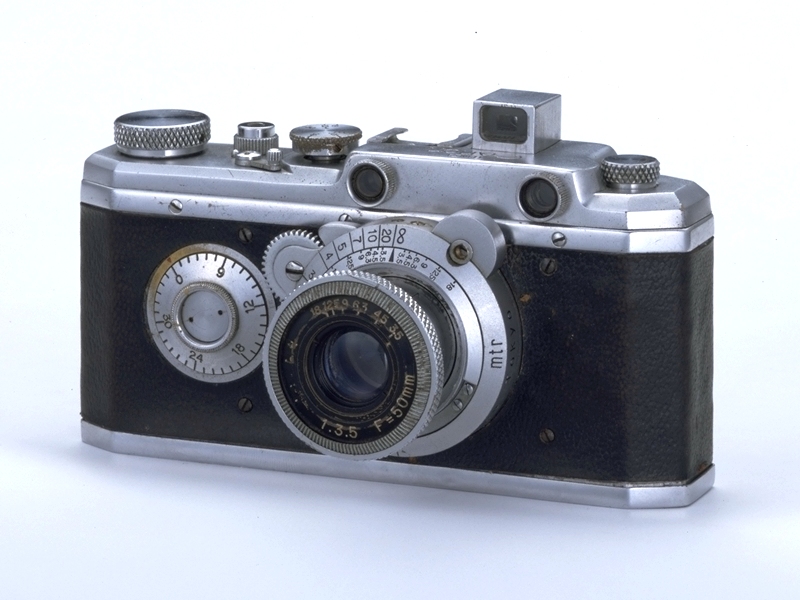
Growth and Technological Advancements (1950-1979)
Between 1950 and 1979, Canon experienced significant growth, marked by its pioneering innovations during this period. From 1950 to 1969, Canon introduced several groundbreaking products, including the Canon IVSb, the world’s first speed-light synchronised 35mm flash-and-shutter camera, setting a new standard in flash photography. This was followed by the release of the Canon 8T, an 8mm cine camera, in 1956, expanding its product range into home movie-making. Canon’s foray into the single-lens reflex camera market came in 1959 with the introduction of the Canon Flex, its first SLR camera. The camera featured a pentaprism viewfinder, enabling photographers to view images directly through the lens—a standard in modern SLRs. Utilising Canon’s first bayonet-style R-mount, the Canon Flex allowed for quicker and more secure lens changes. It had a focal-plane shutter with speeds from 1/1000 second to 1 second. The Canon Flex’s introduction was a pivotal moment for Canon, establishing it as a formidable competitor in the SLR market. This camera’s legacy continues to influence Canon’s camera development today.
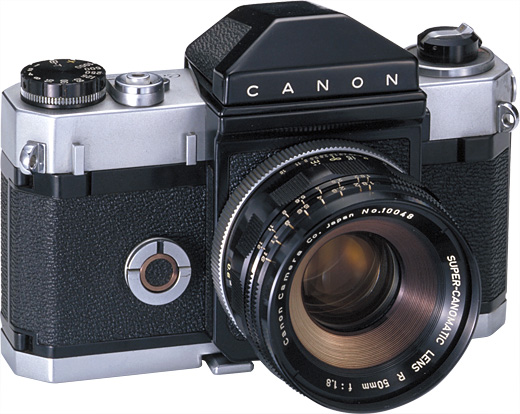
In 1969 the company changed its name to Canon Inc., reflecting its broader vision and diverse product portfolio. One of the standout cameras of this period was the Canon AE-1 SLR camera. The camera, introduced in 1976, is one of the most iconic 35mm single-lens reflex (SLR) cameras ever produced. Designed for amateur and professional photographers, The AE-1 was among the first SLRs to feature a microprocessor-controlled automatic exposure system, operating primarily in shutter-priority mode, which simplified photography for beginners. The camera was a commercial success, selling over a million units from 1976 to 1984. Today, the Canon AE-1 remains highly regarded by collectors and film photography enthusiasts for its reliability, classic design, and image quality. In 1979, the brand introduced the Canon AV-1, a 35mm single-lens reflex (SLR) camera designed to appeal to amateur photographers. Unlike other SLRs of its time, the AV-1 is notable for its aperture-priority automatic exposure system, where the user sets the aperture and the camera automatically selects the appropriate shutter speed. This feature made it easier for beginners to achieve correct exposure without worrying about shutter speed settings.
Digital Revolution and Environmental Initiatives (1980-1999)
In the 80s, Canon initiated significant environmental programs, establishing itself as a technological pioneer and a responsible corporate entity. The introduction of Canon’s EOS autofocus SLR cameras and EF lenses in 1987 marked a transformative moment in the world of photography. The EOS (Electro-Optical System) series represented a significant technological leap, integrating advanced electronic systems into the design of both cameras and lenses, enhancing photographers’ performance, and versatility.
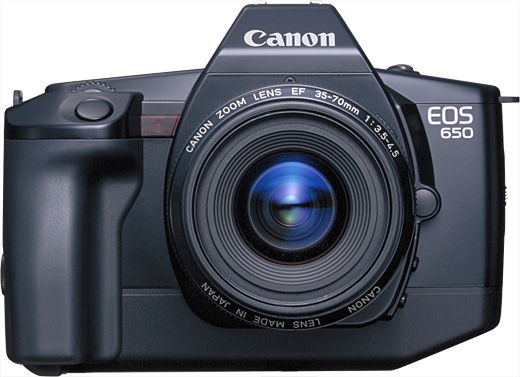
The EOS series was the first to feature a fully electronic mount system, enabling seamless communication between the camera body and lens for faster, more accurate autofocus and aperture control. The initial model, the EOS 650, showcased these advancements, making photography more accessible and precise. Complementing the cameras, the EF lenses offered a wide range of options, from ultra-wide-angle to super-telephoto, all with superior optical quality thanks to innovations like aspherical elements and Image Stabilisation. The legacy of the EOS system continues today, influencing the development of modern digital SLRs and mirrorless cameras.
By the end of the decade, the brand introduced the EOS-1, a top-of-the-line autofocus SLR camera. The 35mm film SLR camera featured an advanced autofocus system with multiple AF points, and a high-speed motor drive capable of shooting up to 5.5 frames per second, the EOS-1 was designed to meet the rigorous demands of professional photographers. Fully compatible with Canon’s extensive lineup of EF lenses, the EOS-1 allowed for a wide range of high-quality lens options. The camera’s extensive customisation options enabled photographers to tailor it to their specific needs.
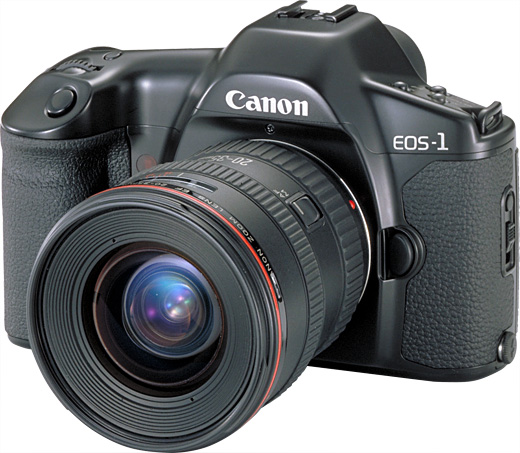
In the 90s we saw Canon make strides in becoming a brand that was more environmentally conscious and sustainable. In 1990, Canon launched its toner cartridge recycling system, showcasing its commitment to reducing its environmental impact. As of 2022, Canon has recycled a cumulative collection volume of about 454,000 tons of toner cartridges.
The mid-1990s marked significant technological advancements, with 1995 seeing the introduction of the EOS DCS 3, Canon’s first digital SLR camera and the EF75-300mm f/4-5.6 IS USM, the world’s first lens featuring image stabilisation. By 1997, Canon further expanded its digital footprint by entering the digital video camcorder market with the launch of the OPTURA (MV1 in other regions), broadening its product offerings.
The New Millennium and Technological Mastery (2000-2024)
The 2003 launch of the EOS DIGITAL REBEL (EOS 300D DIGITAL) democratised high-resolution digital SLR photography, making it accessible to a broader audience. The Canon EOS 5D Mark I introduced in 2005, marked a significant milestone in Canon’s legacy as it was Canon’s first “affordable” full-frame DSLR. Its 12.8-megapixel full-frame CMOS sensor, compact design, and DIGIC II image processor made full-frame technology more accessible to photographers. The camera quickly gained popularity among professionals and enthusiasts for its excellent image quality and portability. In 2008, Canon launched the EOS 5D Mark II, revolutionising the industry with its groundbreaking feature: full HD video recording. With a 21.1-megapixel sensor, DIGIC 4 processor, expanded ISO range, and Live View mode, the Mark II offered significant upgrades over its predecessor. Its ability to capture high-quality video with a full-frame sensor at an affordable price made it a favorite among professional videographers and filmmakers.
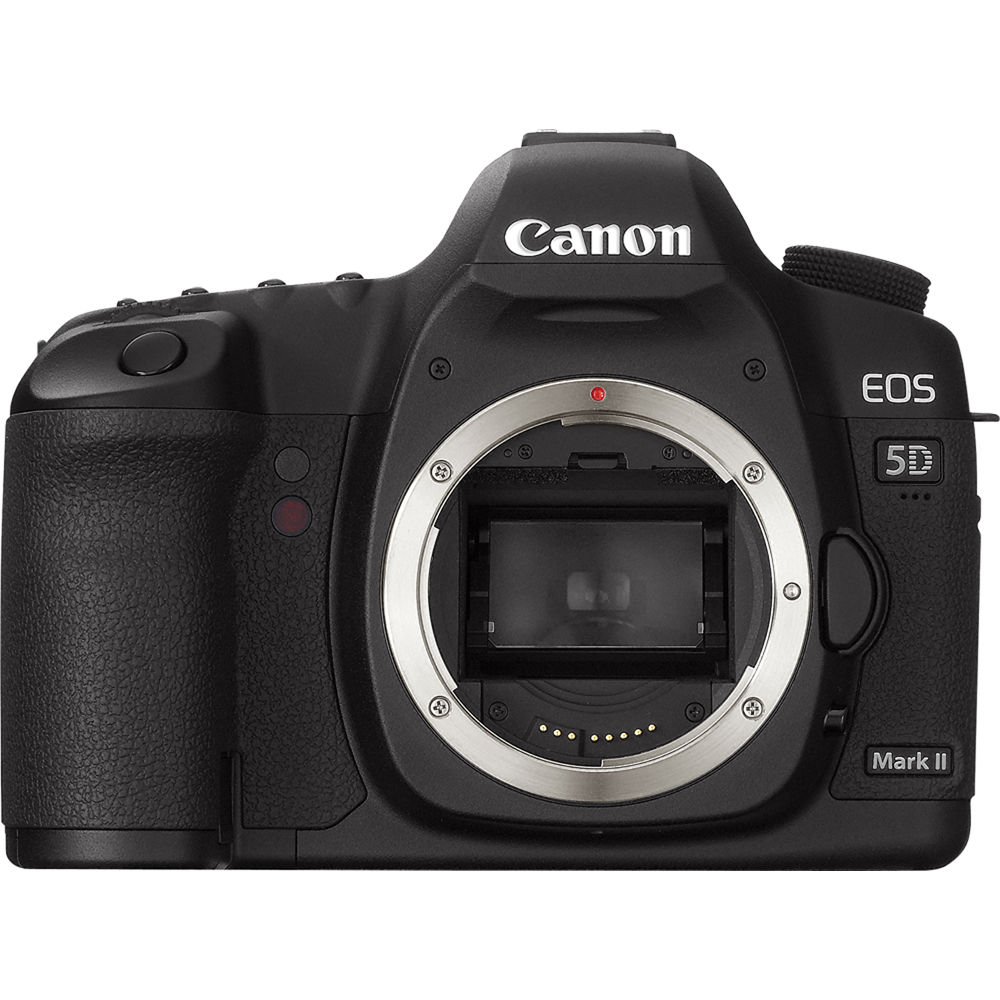
Entering the 2010s, Canon entered the motion picture production industry with the Cinema EOS System, establishing a strong presence in professional video. The 2018 launch of the EOS R System, featuring a new lens mount and full-frame mirrorless technology, marked Canon’s entry into the full-frame mirrorless market. This groundbreaking camera featured a 30.3 MP sensor, the innovative RF lens mount with a short flange distance and large diameter, and Canon’s renowned Dual Pixel CMOS AF system, offering superior autofocus performance. The EOS R brought several advanced features, such as 4K video recording, a high-resolution electronic viewfinder, and robust build quality, appealing to both photographers and videographers. Its introduction was accompanied by the release of a new range of RF lenses, showcasing Canon’s commitment to developing a comprehensive and versatile mirrorless system. The EOS R’s launch signified a major shift in Canon’s strategy, addressing the growing demand for mirrorless technology while maintaining compatibility with the extensive EF lens lineup through adapters, thus ensuring a smooth transition for existing Canon users.
Between 2021 and 2023, Canon expanded its mirrorless lineup with notable models such as the EOS R3, EOS R7, and EOS R10, catering to a wide range of photographers from professionals to enthusiasts. Looking ahead, the highly anticipated Canon R1, set to launch in 2024, promises to push the boundaries of imaging technology even further.
Canon’s journey from a small laboratory in Tokyo to a global imaging giant is a testament to its relentless pursuit of innovation and excellence. As it continues to evolve, Canon remains committed to pushing the boundaries of what’s possible in photography and imaging.

